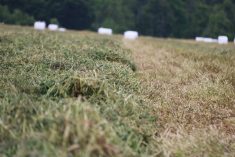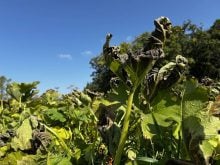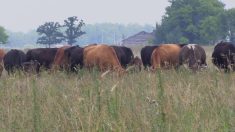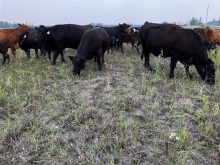When you think of forages, you often think of perennials like alfalfa, clover or timothy, which are there for the long haul and perfect for baling or silage.
While they have many strengths, one weakness became evident last year. They don’t do well when it’s really hot and dry.
[READ MORE] Nitrate risk comes from variety of sources
[READ MORE] Teff a promising forage in dry year
Read Also
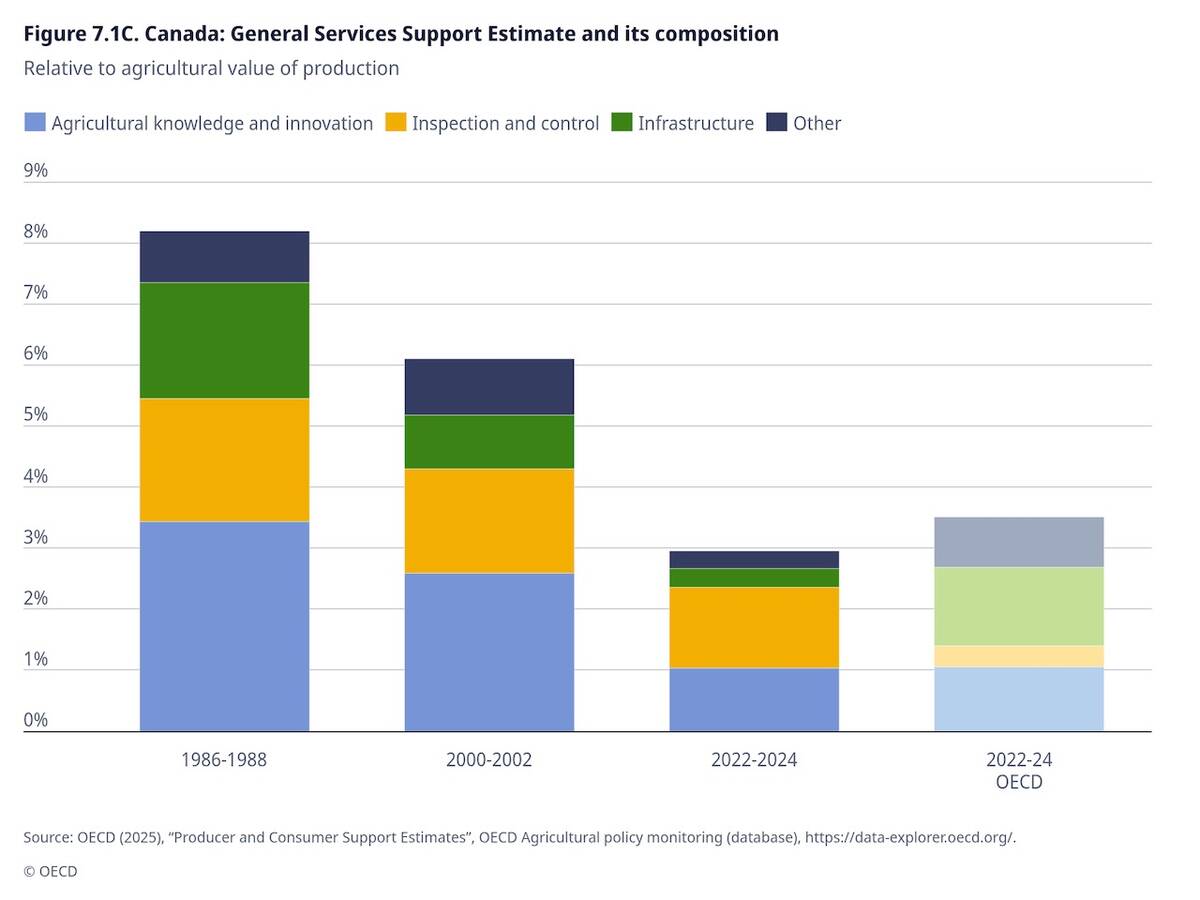
OECD lauds Canada’s low farm subsidies, except supply management
The Organization for Economic Co-operation and Development says Canada’s farm subsidies are among the lowest, but still criticized supply management industries like dairy, poultry and eggs.
Provincial forage and livestock specialist Elizabeth Nernberg is looking at alternatives to annual forages such as millet, sorghum, oats, barley and sorghum-sudan grass and she spoke of them recently at a test plot near Roblin.
“We’re seeing with the drier years, the perennial forages just weren’t putting out like some of the annual crops could, so producers who relied on perennial forages such as alfalfa or grass hay crops were experiencing more feed shortages than those who relied on annual feed crops,” she said.
After the pan-prairie drought last summer, getting more with less was vital. Nernberg emphasized the point with water use figures for some annual forages.
Corn needs three inches of moisture to produce a ton of dry matter per acre. Barley uses four inches and oats uses four and a half. Alfalfa and timothy both need more than six inches.
Perennials need more water to get the job done, in part because they’re cool season plants that didn’t like last year’s hot, dry weather.
Nernberg set up a field trial to look at other options for those who might grow an annual forage instead.
“There’s a combination of the C3 and C4 plants,” she said. “You’ve got the cool season plants like barley and oats and then warm season plants like the millets, the sorghum and sorghum-sudan grass.”

Sorghum-sudan grass is a warm season grass hybrid that is popular in parts of southern Ontario. It has efficient water uptake so it does well in a drought. It goes dormant in really dry conditions but grows again with rain. It may be fed to cattle in pasture, or it can tolerate two or three cuts per season and may be green chopped. It also stores well as chopped silage or wrapped bale silage.
Both crown millet and Siberian millet are popular in Manitoba. Crown millet can form heads 55 days after seeding, while the Siberian takes a bit longer. In Roblin, Nernberg tested another variety.
“You’ll note there’s a golden German millet. That one is a little later maturing,” Nernberg said. “It’s got more of a waxy leaf and it’s better for extended grazing or even swath grazing.”
Golden German millet is a variety of German foxtail millet that was bred at Colorado State University and released in 1969. It’s a C4 grass so it likes heat but it takes up to 85 days to head out. Timing of the staging is important.
“Another point we’ve discovered, and I’m open to hearing what you producers have to say, is that the millets can be harder to dry down,” Nernberg said. “They’ve got the hollow stem, they’re more lush, and they’re easier to put up as round bale silage or chop silage.”
Barley is a big crop in the Parkland region and farmers there have been feeding cattle on barley for generations, generally at the mid-dough stage.
“Some research has said maybe a later dough stage but then you have to be aware of intake and ensuring your animals will consume the whole plant and not just pick through the heads and leave you with straw.”
Barley may have a forage quality advantage over oats but oats have the yield advantage over barley. Oats are generally ready at the early milk stage but may be grazed lightly before that, providing some regrowth. A long open fall with a late frost can give oats time to mature.
“If we seed oats and the frost comes early and it doesn’t mature, what are we losing out,” Nernberg asked. “Should we go with millets, which will be ready to harvest in 60 days?”
Oats may not yield as much but what’s left can be blended poorer quality feed.
“We received a lot of calls, ‘should I plant a millet or should I plant something like barley or oats’,” Nernberg said. “My question to producers is what’s our fall going to be like? Nobody knows when that frost is going to come. It’s the million-dollar question and if we had a crystal ball we probably wouldn’t be here.”
As for silage versus greenfeed, “you can reduce your nitrate level by 30 to 50 per cent if you were to ensile your crop,” Nernberg said. “Silaging usually has better quality feed that you can blend with poorer stuff like straw. Also, with silaging, you’ll have less harvesting losses and a quicker drying time.”




